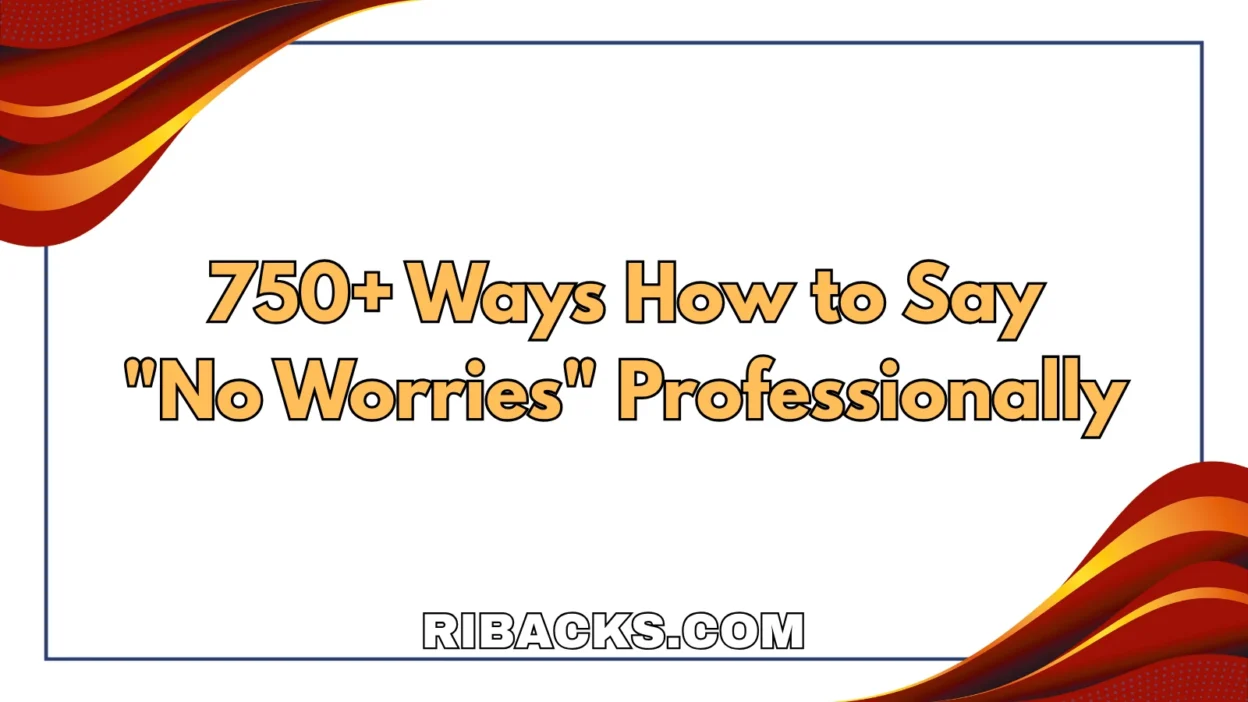The phrase “no worries” is casual, friendly, and great for informal chats—but in professional settings, it can sound too relaxed.
Whether you’re replying to a boss, coworker, or client, knowing how to say “no worries” in a polished way helps you stay both kind and professional.
Here’s your complete guide to smart alternatives for different work situations.
[Polite and Professional Alternatives] — Perfect for emails, meetings, or client replies
- No problem at all.
- Not an issue.
- That’s perfectly fine.
- I completely understand.
- It’s all good on my end.
- Happy to help.
- That’s no trouble at all.
- It happens—no concerns here.
- Absolutely fine, thanks for letting me know.
- Consider it taken care of.
[Supportive and Understanding Replies] — Show empathy and flexibility
- Totally understandable.
- Thanks for the heads-up, I appreciate it.
- Don’t worry about it, we’ve got this.
- These things happen—let’s move forward.
- Not a problem, I’m here to support however I can.
- That’s okay—if there’s anything you need, just let me know.
- All good—life happens!
- Thanks for your transparency.
- No stress from my side.
- I’m flexible—just keep me posted.
[Friendly but Still Professional Replies] — Great for internal team chats
- All good, thanks!
- No worries at all—glad we’re on the same page.
- You’re all good.
- Not a big deal.
- Totally fine on my end.
- No harm done.
- It’s cool—appreciate the update.
- Thanks for keeping me in the loop.
- All set—no issues here.
- No problem—just let me know if anything changes.
[Formal Responses for High-Stakes Communication] — Best for executive-level or client-facing messages
- Thank you for your message—no concerns at this time.
- Please don’t hesitate to reach out if you need anything further.
- I appreciate your communication—everything is in order.
- There is no inconvenience on my end.
- Thank you for the update; I completely understand.
- This doesn’t cause any disruption—thank you for clarifying.
- Understood—please proceed as needed.
- That will work just fine.
- I’m happy to accommodate.
- I trust your judgment on this.
Tips for Saying “No Worries” at Work
- Know Your Audience — Keep it more formal for clients or execs, relaxed for coworkers.
- Use Tone to Build Trust — A warm response can ease tension and show support.
- Balance Friendliness with Professionalism — Sound human, but polished.
- Don’t Overuse It — Vary your phrases to stay engaging and respectful.
- Be Clear and Reassuring — Show that the issue really is no problem.
Conclusion
You don’t have to say “no worries” to be kind and flexible at work. With the right wording, you can stay professional and still make others feel comfortable and supported.
Try out a few of these alternatives in your next message—see which ones feel most natural to you!



